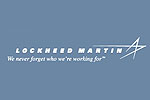Lockheed Martin Celebrates 100th F-35 Lightning II
 FORT WORTH, Texas, Dec. 13, 2013 – At a ceremony attended by more than 2,000 employees and guests, Lockheed Martin [NYSE: LMT] celebrated the production of its 100th F-35 Lightning II. Defense leaders Gen. Robin Rand, Commander, Air Education and Training Command, Randolph Air Force Base, Texas, and Brig. Gen. Michael Rothstein, Commander, 56th Fighter Wing, Luke AFB, Ariz., joined the employees who build the F-35 for the celebration.
FORT WORTH, Texas, Dec. 13, 2013 – At a ceremony attended by more than 2,000 employees and guests, Lockheed Martin [NYSE: LMT] celebrated the production of its 100th F-35 Lightning II. Defense leaders Gen. Robin Rand, Commander, Air Education and Training Command, Randolph Air Force Base, Texas, and Brig. Gen. Michael Rothstein, Commander, 56th Fighter Wing, Luke AFB, Ariz., joined the employees who build the F-35 for the celebration.
The first 100 F-35s include 44 F-35A conventional takeoff and landing (CTOL) variants, 42 F-35B short takeoff/vertical landing (STOVL) variants, and 14 F-35C carrier (CV) variants. The U.S. Department of Defense will receive 95 of the first 100 jets from the F-35 assembly line here. The remaining five jets were delivered to two of the program’s partner countries. The United Kingdom received three F-35B aircraft and two F-35As have been delivered to the Netherlands.
“The 100th F-35 symbolizes the maturation of the F-35 program by the collective government and industry partner team as we prepare to ramp up production,” said Lorraine Martin, Lockheed Martin F-35 Program General Manager. “It took the collaboration of thousands of people – customers, employees and suppliers – from all over the world to make this day possible. Working together with the F-35 Joint Program Office, the team is focused on delivering the F-35’s 5th generation capabilities to the U.S. armed forces and our allies. This is a proud day for the entire F-35 community.”
The 100th aircraft, an F-35A designated AF-41, is the first of 144 F-35s scheduled for delivery to Luke AFB beginning in 2014. In June, the Air Force announced its decision to increase the number of squadrons at Luke AFB to six with 144 aircraft assigned. By 2015, Luke AFB will be training pilots, including international pilots, destined for deployment to combat units around the world.
The F-35 Lightning II is a 5th generation fighter, combining advanced stealth with fighter speed and agility, advanced mission systems, fully fused sensor information, network-enabled operations and cutting-edge sustainment. Three distinct variants of the F-35 will replace the A-10 and F-16 for the U.S. Air Force, the F/A-18 for the U.S. Navy, the F/A-18 and AV-8B Harrier for the U.S. Marine Corps, and a variety of fighters for at least 10 other countries.